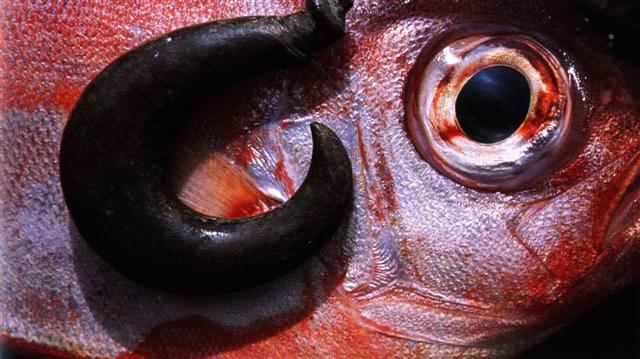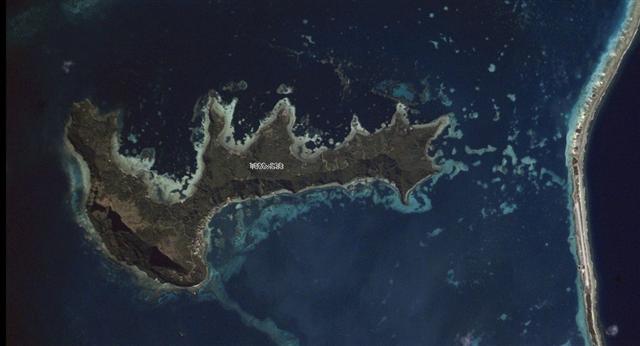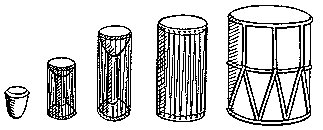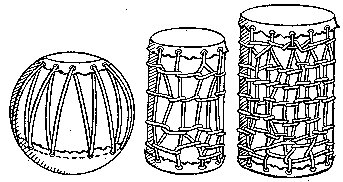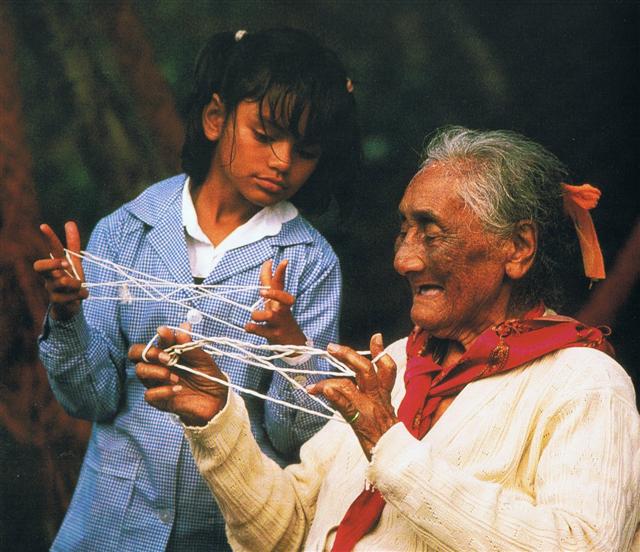67. The 6 stone heaps outside the cave with the seriously injured Kuukuu inside were probably alluding to the Pleiades (Tau-ono). ... there are many little heaps of stones here and there on the bank along the Sea Coast, two or three of the uppermost stones of these piles are generally white, perhaps always so when the pile is compleat: it can hardly be doubted but these piles of stones have some meaning tho' we do not know it ... ... Beaglehole states that these piles of stones are temporary burial places ... Also in the G text we can find these 'stone heaps' mentioned, viz. in the glyph preceding that at heliacal Antares:
There were 10 right ascension days from Tau-ono (*55) to May 25 (*65), but a better suggestion could be to count 10 + 183 = 193 days, from May 15 (135) to November 24 (328). 193 = 8 * 24 + 1.
Possibly these 6 'stones' high up in front in Ga7-15 were blackmarked in order to indicate that Ain was not at the Sun but at the nakshatra side. And 71 * 5 = 355 (the day number at the northern winter solstice). Ira could not see the ship of Hotu A Matua because it was night when the king arrived: ... The canoes of Ava Rei Pua and of Hotu were seen near the (off-shore) islets. On the fifteenth day of the month of October (tangaroa uri) the canoe of Hotu and the canoe of Ava Rei Pua landed. On the fifteenth day of the month of October (tangaroa uri), Nonoma [Jupiter] left the house during the night to urinate outside. At this point Ira [Sun] called out to Nonoma, 'Look at the canoe!' Nonoma ran, he quickly went to Te Hikinga Heru (a ravine in the side of the crater Rano Kau) and looked around. There he saw the double canoe way out near the (offshore) islets, and the two (hulls of the canoe) were lashed together. He ran and returned to the front of the house. He arrived and called into the house: 'Hey you! This canoe has arrived during the night without our noticing it!' Ira asked Nonoma, 'Where is the canoe, which you say is lying out there (in the water)?' Nonoma's voice came back: 'It is out there (in the water) close to the (offshore) islets! There it lies, and the two (hulls) are lashed together.' The four of them (corrected for 'the six of them') went out and picked up leaves (on branches) to give signals. They picked them up, went and arrived at Te Hikinga and saw the canoe. Raparenga [Moon] got up, picked up the leaves, took them in his hands, and waved, waved, waved, waved ... Manuscript E obviously contains numerous Signs. Here we cannot avoid noticing how first Ira calls out from the inside of the house to Nonoma who was outside in the night to look for the canoe and yet Ira appears to be confused as to where the canoe was. Perhaps Manuscript E described not only the time frames of the Explorers respectively of Hotu A Matua but also provided important keys to the names of the seasons or months and of the asterisms according to the old system. There could for instance have been a season ('year') named Oromanga, stretching from heliacal Sirius at Alkes (84 days before Antares) to η Andromedae at the Full Moon. 391 - 181 = 210 (= 7 * 30). Or possibly this season was Oro and the month at its beginning Oro-manga. ... The dream soul went to the other side of the mountain Hau Epa. As soon as the dream soul looked around, she saw the sand (beach), which was very white and light. She remained there and explored everything. After she had looked around carefully, the dream soul of Hau Maka said, 'Ah! This is the place that will serve as a residence for the king. She named the place Oromanga A Hau Maka O Hiva and also named the neighboring bay Hanga Moria One A Hau Maka O Hiva ...
... The war god Oro. Oro was worshipped all over Polynesia, but in Tahiti not represented by a carved human figure. Instead he was a bundle tied up with cords over a wooden core; limbs and facial features can, however, be recognized. Pleated sinnet cloth on wood. Tahiti ...
The island of Manga-reva looks like a kind of hook (and it is also somewhat similar in outline to that part of Hydra which is below Crater and Corvus):
After Land had been fished up (lifted) from the Sea it was necessary for her inhabitants to change from fins to legs. Or when the birds had landed they needed their legs more than their wings. ... During his descent the ancestor still possessed the quality of a water spirit, and his body, though preserving its human appearance, owing to its being that of a regenerated man, was equipped with four flexible limbs like serpents after the pattern of the arms of the Great Nummo. The ground was rapidly approaching. The ancestor was still standing, his arms in front of him and the hammer and anvil hanging across his limbs. The shock of his final impact on the earth when he came to the end of the rainbow, scattered in a cloud of dust the animals, vegetables and men disposed on the steps. When calm was restored, the smith was still on the roof, standing erect facing towards the north, his tools still in the same position. But in the shock of landing the hammer and the anvil had broken his arms and legs at the level of elbows and knees, which he did not have before. He thus acquired the joints proper to the new human form, which was to spread over the earth and to devote itself to toil ...
... The giant lay underground, and trees grew over his head. Vainamoinen found his way to the giant's mouth, and planted his iron staff in it. The giant awoke and suddenly opened his huge mouth. Vainamoinen slipped into it and was swallowed. As soon as he reached the enormous stomach, he thought of getting out. He built himself a raft and floated on it up and down inside the giant. The giant felt tickled and told him in many and no uncertain words where he might go, but he did not yield any runes. Then Vainamoinen built a smithy and began to hammer his iron on an anvil, torturing the entrails of Vipunen, who howled out magic songs to curse him away. But Vainamoinen said, thank you, he was very comfortable and would not go unless he got the secret words. Then Vipunen at last unlocked the treasure of his powerful runes. Many days and nights he sang, and the sun and the moon and the waves of the sea and the waterfalls stood still to hear him. Vainamoinen treasured them all and finally agreed to come out. Vipunen opened his great jaws, and the hero issued forth to go and build his boat at last ... ... Sanskr., tu (Ved.), be powerful, to increase, to hurt; tuy and tunj, to strike, push, abide, give or take; tud, to strike, sting; tund, be active; tup, tump, tumbh, to hurt, kill; khud (Ved.), kshud, to push, to pound. Lat., cudo, strike, beat, sting; incus, an anvil; tundo (tutudi), to beat, strike, pound; tussis, a cough; tueor, guard, watch, keep; tutus, safe; tuber, tumor, tumulus; stupeo, be stunned, benumbed. Greek, τυπος, a blow; τυπτω, έτυπτον, to beat, strike; τυλη, τυλος, a knot or callus, a lump, hump, knob, a cushion; τυλυγμα, a wheal, swelling: Liddell and Scott refer this latter to Sanskrit tu ... ... 'By striking the anvil,' said Ogotemmŕli, 'they get back from the earth some of the life-force they gave it. Their blows recover it.' But blows on the iron must be dealt by day. The smith's work is day labour, no doubt because the smithy fire, being a fragment of the sun, could not shine at night. That is why it is forbidden, not only for smiths but for everybody, to strike blows on iron or stone or earth in the night-time. No blow of hammer or tap of pestle should be heard, whether loud or soft, in the silent hours. To strike blows at night would destroy the effect of the blows struck by day. It would mean the rejection of all that had been gained, so that the smith would lose whatever he had recovered during the day of the life-force of which he formerly divested himself ...
... The third Word, clear and perfect in character, took shape in a cylinder with a strip of copper winding through it, that is to say, in a three-dimensional figure. These three technical processes (as he further remarked) all proceeded by following a line, either undulating or zig-zag, and each was characterized by three distinct features: humidity of the fibres, ensuring the freshness necessary for procreation; light for the weaving, that being a daylight process, prohibited at night on pain of blindness; sonority of the drum. There was also a development, from the material point of view, from trimmed bark to cotton thread, and from thread to leather strips and to a copper band. The European had known for years the magical function of the sounds of a smithy. He had been present many times at rituals in the course of which at a certain point a smith would strike the rock with his hammer or with the iron part of his anvil. By producing sound from the iron, in which the mythical first smith had brought so many benefits to mankind, he was reminding his fellow-men of the supreme power of Amma and the Water Spirit. He was assisting their prayers and strengthening them by the sounds he made; he was appeasing the possible wrath of the celestial Beings by this acknowledgement of their pre-eminence. When men quarrelled with one another, he would intervene between the parties, hammer in hand, and strike the rocks, thus bringing a divine note into the human disorder and calming the passions aroused ... ... The most important of all drums, he said, was the armpit drum. The Nummo made it. It consists of two hemispherical wooden cups connected through their centres by a slender cylinder. It is like an hour-glass with a very long narrow neck. With this instrument tucked between his left arm and armpit, the drummer, by pressing on the hollow structure of thin wood, can tighten or relax the tension on the skins and so modify the tone. 'The Nummo made it. He made a picture of it with his fingers, as children do today in games with string.' Holding his hands apart, he passed a thread ten times round each of the four fingers, but not the thumb. He thus had forty loops on each hand, making eighty threads in all, which, he pointed out, was also the number of teeth of his jaws. The palms of his hands represented the skins of the drum, and thus to play on the drum was, symbolically, to play on the hands of the Nummo. But what do they represent? Cupping his two hands behind his ears, Ogotemmŕli explained that the spirit had no external ears but only auditory holes. 'His hands serve for ears,' he said; 'to enable him to hear he always holds them on each side of his head. To tap the drum is to tap the Nummo's palms, to tap, that is, his ears.' Holding before him the web of threads which represented a weft, the Spirit with his tongue interlaced them with a kind of endless chain made of a thin strip of copper. He coiled this in a spiral of eighty turns, and throughout the process he spoke as he had done when teaching the art of weaving. But what he said was new. It was the third Word, which he was revealing to men ...
|
|||||||||||||||||||||||||||||||||||||||||||||||||||||||||||||||||||||||||||||||||||||||||||||||||||||||||||||||||||||||||||||||||||||||||||||||||||||||||||||||||||||||||||||||||||||||||||||||||||||||||||||||||||||||||||||||||||||||||||||||||||||||||||||||||||||||||||||||||||||||||||||||||||||||||||||||||||||||||||||||||||||||||||||||||||||||||||||||||||||||||||||||||||||||||||||||||||||||||||||||||||||||||
















